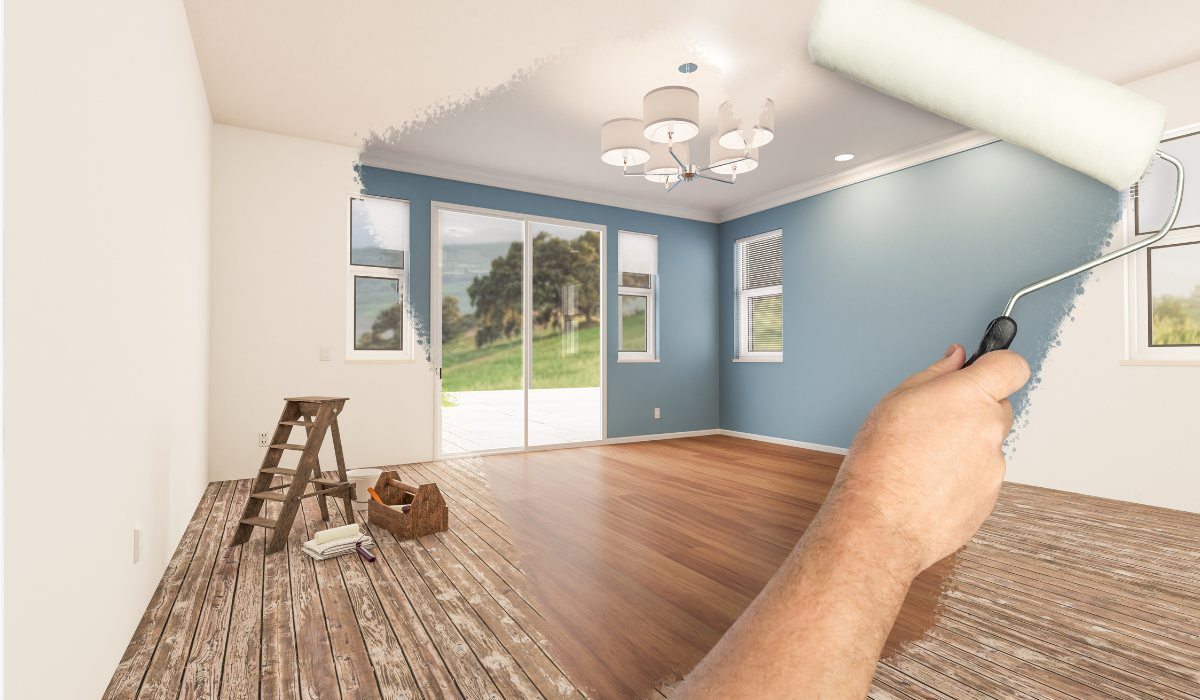While choosing colours for your home’s walls, an important decision you need to make is the finish you would like on the walls. Different paint finishes result in different effects and can significantly enhance the overall appearance of the space. The choice of finish depends on several factors like the location of the wall and traffic. But wait! Simply choosing a finish and applying it is not enough. You also need to take care of it to ensure its longevity and retain its appearance. In this article, we will talk about the varying maintenance requirements of different types of paint finishes that can help retain their charm.
See also: Matte finish paint design ideas for home
Flat/matte finish
This non-reflective finish is ideal for hiding imperfections but is not very durable and often prone to stains and marks and are mostly used in low-traffic areas like bedrooms and ceilings. Since this finish is not as durable, it is best cleaned gently. Consider dusting regularly with a soft, dry cloth and for stains, use a mild soap solution. Avoid scrubbing and rough cloths as they can damage the paint.
Touch-ups can be challenging when it comes to matte finishes as the new paint might not blend perfectly with the existing finish. Specialised blending techniques that use a sponge brush or involve feathering the edges can help improve the results by merging the new coat better with the existing paint. Avoid using this finish in high-traffic areas and cover walls with furniture or artwork wherever possible. For slightly easier cleaning, consider using specially formulated washable variants.
Eggshell finish
Slightly lustrous with a soft sheen, this finish is more reflective and durable than flat finishes with better stain resistance. Common applications include in living rooms, dining rooms and hallways. Regular cleaning can be done using a mild detergent solution and a soft cloth. For tougher stains, consider using a vinegar solution or a mild, non-abrasive cleaner, preferably after testing on a small area first.
Touching up eggshell finishes is easier as the paints tend to blend well with the existing layer. Use a small brush to apply the paint and feather the edges for more seamless blending. While the finish is resistant to marks, it is still advisable to address spills and stains promptly to retain its appearance.
Satin finish
The soft sheen of a satin finish can reflect light and provides a polished look without excessive gloss. With greater durability than either flat or eggshell finish, it is ideal for use in moderate-traffic areas like family rooms and children’s rooms. This finish can handle slightly harsher and more frequent cleaning. Use a mild detergent for regular cleaning and address stubborn stains with a gentle abrasive cleaner. However, stay away from harsh scrubbing pads as they may damage the finish.
The touch-up process is relatively simple and involves applying the paint with a brush or roller and blending the edges. For better results, it is recommended to retain some of the original paint for later use to ensure consistency. While the finish is less prone to showing imperfections than its counterparts, periodic upkeep like dusting and prompt cleaning of spills can help maintain its appearance better.
Semi-gloss finish
This shiny and reflective finish provides a smooth and hard surface alongside qualities like durability, resistance to moisture and easy cleaning. Ideal for high-traffic areas that need to withstand greater wear and tear, it is generally used for trim, mouldings and doors. It is a robust finish that can handle frequent cleaning. A mild soap solution works for regular cleaning while tougher stains can be addressed using diluted vinegar or baking soda paste.
Due to the durability of the finish, the touch-up process is a breeze. Simply apply as many coats as required with a brush or roller and blend well. While the finish displays exceptional resistance to moisture, it is still necessary to protect it from excessive moisture buildup and use appropriate cleaning products to avoid abrasion.
Gloss finish
Shiniest and most reflective of the lot, gloss finish is preferred for its smooth and polished look, high durability and exceptional resistance to damage, moisture and stains. It is suitable for use in high-traffic areas and also preferred for high-visibility areas like feature walls. This finish is easy to clean and can handle a lot of scrubbing without showing any signs of damage. A mild detergent solution works well even for heavy-duty cleaning due to its superior stain resistance.
Due to its high sheen, touches-up on this finish tend to be more noticeable. It is necessary to blend it well and consider multiple re-coats for best results. Clean regularly to keep the finish looking fresh but avoid harsh chemicals and abrasive cleaners. While generally resistant to stains, dirt and imperfections are highly noticeable on this finish, thereby making routine maintenance even more important.
FAQs
Can I clean matte finishes without damaging them?
Being less durable, matte finishes are prone to damage and must be cleaned using a soft cloth and a mild soap solution. Scrubbing and abrasive cleaners should be avoided.
How do I handle stains on eggshell finishes?
Eggshell finishes can handle moderately harsh cleaning, Stubborn stains can be addressed using diluted vinegar or a mild non-abrasive cleaner.
What is the best way to touch up satin-finished walls?
Use the same paint originally applied and apply with a brush or roller. Blend the edges by feathering and consider applying multiple coats if the touch-up is noticeable.
Can semi-gloss finishes be cleaned with stronger cleaners?
Semi-gloss finish can be cleaned using a mild soap solution and tougher stains can be addressed with diluted vinegar or baking soda without any abrasive scrubbing tools.
How do I prevent gloss finishes from showing fingerprints and smudges?
Clean the walls regularly with a mild detergent solution and use furniture pads and wall protectors in high-traffic areas to minimise direct contact with the walls.
How to maintain paint finishes in high-humidity areas?
A semi-gloss and gloss finishes are most suited for high-humidity areas as they are more resistant to moisture. Use exhaust fans in these areas and address leaks promptly to reduce moisture levels and clean the walls regularly to prevent mould growth.
How often should I inspect and touch up painted walls?
While the frequency depends on the traffic and use of the area, it is recommended to inspect walls for signs of wear or damage every 6 - 12 months and touch up as required.
| Got any questions or point of view on our article? We would love to hear from you. Write to our Editor-in-Chief Jhumur Ghosh at jhumur.ghosh1@housing.com |







